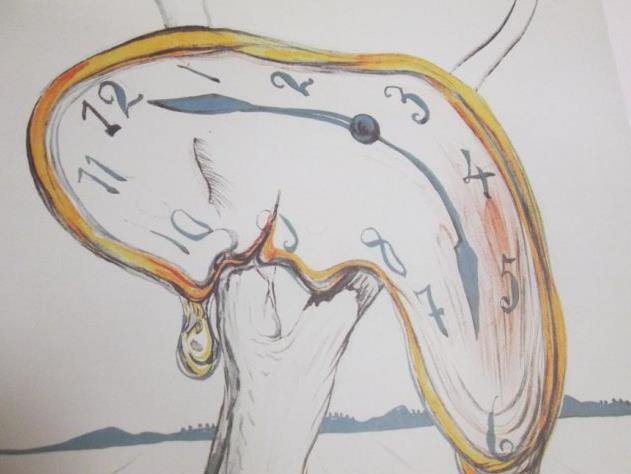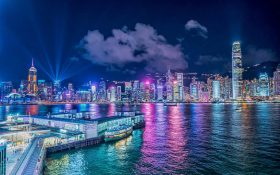Salvador Dali, The Persistence of Memory
In 2016, the most commercially successful music in the world wasn’t by Beyoncé, Britney or Bieber. It wasn’t even by Bowie, Prince or Leonard Cohen. It was by Mozart. According to trusted music industry source Billboard Magazine, Universal Music’s recently released box set, Mozart 225: The New Complete Edition, sold 1.25 million copies in its first five weeks on sale, outperforming runner-up, Beyoncé’s Lemonade, which sold just 1.05 million copies over the same time period.
For advocates of those media that might be described as “fine arts”, this seems like an obvious win – that classical music is still capable of such a genre-defying feat is a remarkable achievement and surely an indication that it still has plenty to offer in our commercially cut-throat culture. But it also illuminates a more problematic trend. Mozart boasted a huge public following during his lifetime. Some two and a quarter centuries after his death, it seems the public’s yen for Mozart has barely waned and yet today, interest in the music of living composers is weak, to say the least. It would be breathtakingly glib to suggest there simply aren’t any artists who can match the abilities of the greats of yore; there are, no doubt, astonishing talents on our doorstep, but they are either untapped or unchampioned, relegated to the fringes of the arts scene, or forced to seek recognition overseas.
Even at the most aficionado-focused end of the spectrum, the fine performing arts (classical music, opera and ballet) are stuck in a time warp, with programs overwhelmingly skewed towards the easy and familiar hits of centuries past. That’s not to say that there’s a blanket ban on anything penned more recently, but the box-office gravity of those revered old masters is a powerful force, and so it’s largely the living composers content to stay in this inoffensive aesthetic orbit, firmly rooted in the past, who are performed with any regularity. Even then, the outings for these favoured few can be few and far between; when it comes to classical composers, you’re better off dead (not to mention preferably white and male).
This isn’t limited to the Antipodes, but arguably, Australian tastes are especially narrow by international standards; even works considered relatively docile in other parts of the world are apparently wince-inducing Down Under. Take for example the widely programmed operas of Benjamin Britten and John Adams, which Opera Australia Artistic Director Lyndon Terracini claimed could only be braved by a company once a decade, lest there be financially ruinous consequences. When such tried and true staples of the standard rep are considered too challenging, work that is genuinely groundbreaking, even that of respected and established artists, barely stands a chance of making it to our most respected stages.
A case in point comes courtesy of 2016’s litany of dearly departed artists. One of the first great losses of last year came on January 5 with the death of French composer and conductor Pierre Boulez. Unquestionably one of the most globally influential musicians of the 20th-century, his passing went largely unmemorialised in Australia.
By contrast, the orchestral tribute to the late pop icon David Bowie, Nothing Has Changed, is still on tour around Australia and by April will have been staged by every major State symphony orchestra in the country. To be clear, I’m no snobbish curmudgeon – not only can I see the commercial opportunity of giving this program such a sprawling tour, I can also appreciate its artistic merits. However, in terms of their contributions to their respective artistic spheres, both Boulez and Bowie can be considered on a par. That one of these extraordinary artists should be so patently neglected while the other is treated to a bonanza, is not just pandering, it’s a shamefully cynical feeding frenzy.
The visual arts and architectural design have managed to keep public interest at pace with contemporary innovation, with radicals and firebrands such as Marina Abramovic, Damien Hirst, Jeff Koons and Banksy achieving global superstar status. The performing arts have never been as successful in drumming up similar enthusiasm. Smaller (but often poorly funded) organisations are largely left to assume the mantle of supporting the new, obscure and experimental. Groups such as Ensemble Offspring, Sydney Chamber Opera, Plexus, Chamber Made Opera and the Australian Art Orchestra operate under the constant threat of financial collapse but continue to support new art as a matter of pride and principle. Meanwhile, major organisations enjoy relative security in the current Federal arts grant architecture. In a funding environment where the gulf between the haves and have-nots is so wide, it seems just plain wrong that “give ‘em what they want” has become the guiding motto of Australia’s biggest fine arts presenters.
Perhaps the greatest hurdle is the perception that the fine arts should only offer slushy, soft-focus sentimentality, like a soul-soothing spa treatment.
‘So what?’ you might ask, and this is a valid question. After all, if this argument only hinges on whether a company is being commercially shrewd or not, it’s hardly indefensible to program work that brings home the bacon and, ergo, keeps both Aussie artists in gainful employment and Aussie audiences appeased. But this is a more complex issue than mere checks and balances.
There are long-term implications for the vibrancy of Australian culture that are being ignored in the pursuit of short-term financial certainty. Prosaic programming breeds apathy in the public; supporting only those living artists working in a narrow aesthetic range stunts the growth of that art form; arresting the development of an artistic practice erodes the viability of artists making it their full-time occupation; the ensuing financial hardship forces artists to either abandon their careers or seek recognition abroad.
If this domino effect sounds intractable, it’s worth noting that tackling other disparities in the arts is currently a major interest of arts companies of every variety in Australia, with theatre presenters leading the charge. Major initiatives of affirmative action introduced to ensure more female and racially diverse artists access important opportunities have proven how effective proactive programs can be in nurturing a spectrum of artists that reflects our aspirations for the modern world, as a richly multicultural and gender-blind society.
But surely, our efforts to improve demographic diversity in response to the entrenched colonial patriarchy enshrined in the artistic canon, should also include efforts to improve artistic diversity – shouldn’t the substance of our art be as important as the people making it? Achieving parity between the old and the new should be as important to programmers as redressing the imbalance of women and racially diverse voices at the highest levels of Australian arts.
To give the major symphony orchestras, ballet and opera companies their dues, platforms for new work do exist, but these are often ring-fenced, presumably to protect loyal subscribers from vexing dissonances, and rarely given the same profile or prestige as “core programming”. Perhaps this is viewed as a fair compromise, and indeed Sydney Symphony’s Brett Dean curated Carriageworks program and Melbourne Symphony’s annual Metropolis Festival are fine examples of savvy audience development and open minded programming. But it does beg the question: is banishing contemporary music (or for that matter contemporary ballet or opera) from regular programs reinforcing the notion that this work is not for everyone, an acquired taste that needs to be kept at arm’s length?
Perhaps the greatest hurdle is the perception that the fine arts should only offer slushy, soft-focus sentimentality, like a soul-soothing spa treatment. Art should not only be “beautiful” by some arbitrary yardstick of perfumed 18th-century nostalgia but rather reflect the full spectrum of human experience, whether that be sorrow, fear, confrontation, rage or any other nuanced, shaded detail of our emotional capacity. It should be the duty of our artistic directors not to make assumptions about public appetites, but to show leadership by educating audiences with something unexpected and, yes, challenging, more than a handful of times a year. Indeed, catering to this apparent demand for accessible, easy entertainment should work in the favour of our neglected creatives. If movie soundtrack performances and orchestrated pop-star karaoke gigs, musical theatre productions and sickly-sweet Christmas pageants are transparently cash-cows, it seems reasonable to question why this mass-appeal programming isn’t used to support the creation and promotion of new and obscure work.
It is true, that contemporary work is often thought of as unpopular in the performing arts. It is also undeniable that perhaps only a fraction of these newly penned works will achieve some measure of longevity. But it is worth noting, that if audiences of the past had shown the same hostility and indignation today’s audiences often display towards the new, many of those beloved favourites of the canon would never have survived past their premieres. It is our responsibility as cultural custodians for future generations not to dismiss an entire era of artists as irrelevant in comparison to the geniuses of yesteryear.
Lastly, Australia’s artistic leaders should make good on the promises of our arts institutions, who equip aspiring creatives with world-class skills only for them to be greeted upon graduation by an inhospitable sector with few opportunities. If Australian arts is to be considered with any seriousness on the international stage, our major presenters must be trailblazers, rather than kowtowing to a perception that Aussie arts lovers are only interested in the most repetitive, obvious and bland entertainment. It’s time to end the time warp.





